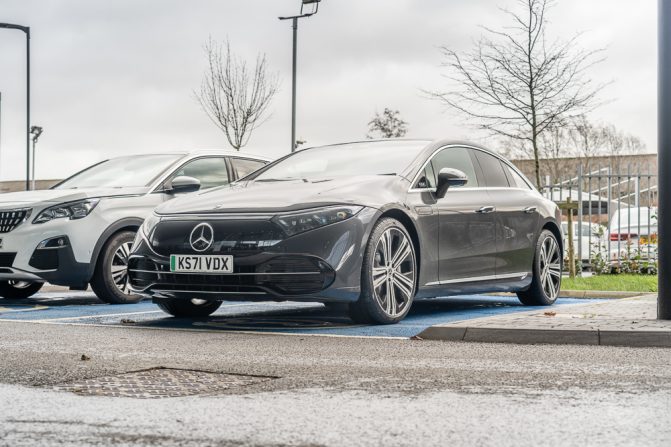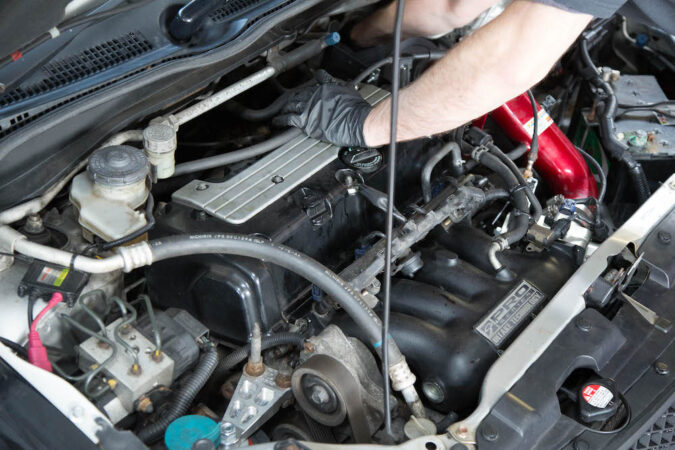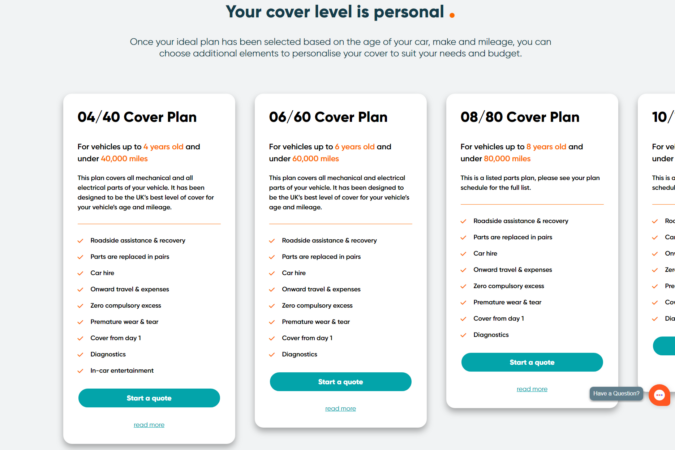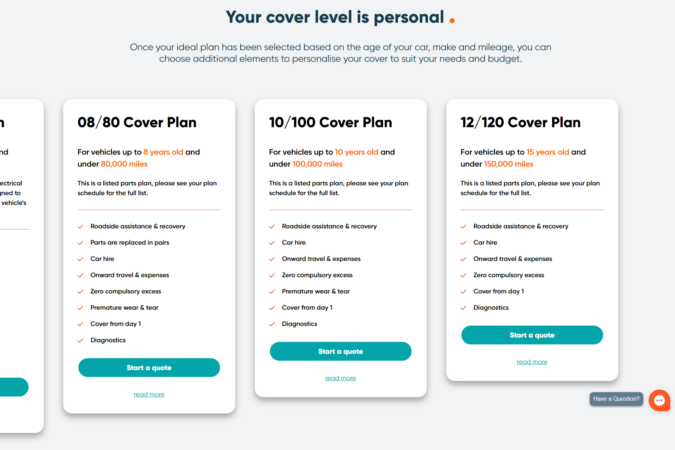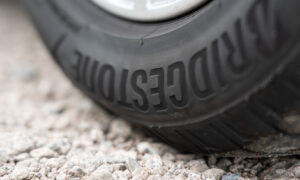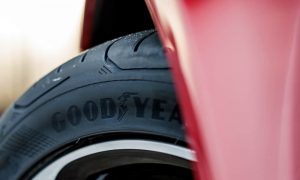If you’re planning to get an extended warranty for your car, there might be a bunch of questions occupying your head right now… What does it cover, how long does it last, what is included or excluded, etc. Understanding any automotive warranty programme can be a headache, but worry not, as we aim to make things a bit easier with this quick little FAQ.
With that in mind, here are some of the top most popular questions we’ve found that folks were asking when they wanted to know more about extended warranties for their cars, and if you have any questions yourself, feel free to let us know. So, here goes…
1. What does an extended car warranty typically cover in the UK?
How much an extended warranty covers will depend on the warranty plan itself. If you’re getting an extended manufacturer’s warranty, it would typically only cover mechanical and electrical issues. However, a third-party, aftermarket extended warranty is far more comprehensive.
For example, Warrantywise has levels of cover that encompass various mechanical and electrical parts of your car, which include issues caused by premature wear and tear, as well as unexpected breakdowns or parts failure. If you’re still unsure, make sure you study the warranty plan you’re getting to get a better understanding of what they do and don’t cover.
2. Are there different levels of cover available with extended warranties?
Yes, you can get different levels of cover when shopping around for extended car warranties. For example, with Warrantywise, they have five different cover plans, each one applicable to cars of different ages and mileages. For instance, their entry-level 04/40 plan covers cars that are up to 4 years old and have under 40,000 miles on the odometer.
This plan is more comprehensive than the others, which covers most mechanical and electrical parts of your car, including the airbags, air conditioning unit, emissions systems failure, infotainment system, MOT failures, and more. Each of their plans gives you flexibility with what specific parts of your car you’d like to cover, and you can add more protection on top of the default ones, if you need them.
3. How long do extended car warranties typically last?
The length of cover you get with extended warranties will differ from one plan to the next. A warranty provider will denote how long the warranty plan covers for, usually in the form of mileage and age. For example, with a Warrantywise 04/40 plan, designed for cars up to 4 years old and have under 40,000 miles on the odometer, it covers for protection against failure due to premature wear and tear up until your vehicle reaches 10 years of age or 100,000 miles.
This same plan also ensures that its many benefits remain valid up until your vehicle reaches 12 years of age or 120,000 miles. Therefore, before you purchase any extended warranties for your car, make sure you understand just how long they cover for, and ensure you get enough coverage to last however long you need it to. It’s worth taking a closer look, as well, at what might disqualify you from being able to request a warranty claim, even if you’re still within the warranty period. This is usually due to neglect of your car or not servicing it regularly.
4. Can I purchase an extended warranty for a used car?
Absolutely! It’s worth bearing in mind, however, that the type of extended warranties you can buy for used cars will differ from one type to another. For example, there are ‘approved used’ warranties, which manufacturers offer when you buy a car from them via an approved used car programme or their in-house pre-owned vehicles incentive. In addition, individual car dealerships might also offer their own warranty programme.
The latter might be offered to you as an optional extra that you can bundle together if you buy a car from their showrooms, or they could also include a simple 12-24 months warranty whenever you buy a car from them. On top of that, there are also third-party aftermarket extended warranties, such as Warrantywise, that you can get for used cars, too. These are generally the most comprehensive ones, which offer the best level of cover and the most amount of benefits bundled in, though make sure you’re wary of what is and isn’t covered or included.
5. Are there any restrictions on the age or mileage of a car for purchasing an extended warranty?
Yes, depending on which extended warranty programme you’re looking at, there are restrictions on the age or the mileage of your car. This is especially handy if and when the original, factory-backed warranty for an older car has run out, or if it can’t provide you with as much cover as you may want. If so, it’s always a good idea to consider getting an extended warranty. The only thing to be wary of is restrictions around how old your car is, and how many miles it’s driven.
With the levels of cover that Warrantywise offers, for example, their 12/120 plan provides warranty cover for vehicles up to 15 years old, or with under 150,000 miles on the clock. The key reason why warranty providers have age and mileage restrictions is due to the fact that older cars, and vehicles that are driven more, are more susceptible to requiring more repairs, as they age. Moreover, there’s also the fact that older and frequently driven cars would see more of their parts (i.e. mechanical or electrical components) reach their natural end-of-life, which typically isn’t covered under warranty.
6. What types of repairs are usually excluded from extended warranties?
One of the most important things to remember when you’re comparing between different warranty providers is what is included in the cover, and what isn’t. In warranty terms, these are referred to as your plan’s ‘inclusions’ and ‘exclusions’. All warranty programmes have some exclusions, especially when assessing what sort of issues with your car and the associated fixes needed aren’t covered. Usually, most extended warranties won’t provide cover for repairs that are caused by accidents (insurance does that, not warranty), as well as repairs that would be required due to neglect or lack of care on your part.
Warranty providers such as Warrantywise make these explicitly clear in their documentation. For example, they note that they don’t cover repairs related to non-mechanical or non-electrical components of your car; i.e. bits of the interior or trim pieces. Additionally, Warrantywise also specifies that they won’t cover repairs for the breakdown of parts that are at the end of their natural life. Moreover, component or system failures due to poor servicing or them not being taken care of properly, are also excluded from coverage.
7. Is roadside assistance included in extended car warranties?
Not all extended warranties provide this. For instance, some manufacturer warranties are oftentimes restrictive and limiting when it comes to benefits beyond covering basic manufacturing defects and engineering faults. As such, it’s important to properly read up the warranty plan schedule and documentation to correctly understand beforehand as to what you do get, even if it’s an optional package. However, while a manufacturer warranty is not likely to include roadside assistance as standard, a lot of aftermarket extended warranties do provide these, such as Warrantywise.
They offer 24/7 roadside assistance, where a mobile technician comes over to your stricken car and tries to get it going again. Or, if they can’t manage this, they’ll be able to call up recovery services to have it towed to a nearby workshop. Additionally, most aftermarket warranty providers include or offer additional perks and benefits, such as hiring a rental car if your car isn’t driveable or if it’s being worked on. Or, if you’re left without either a car or a mode of transportation, they could also partly cover the cost of an overnight stay at a hotel or even compensate travel expenses, if you need to get home by rail, bus, or taxi.
8. Do I have to get repairs done at a specific dealership or repair shop with an extended warranty?
This depends on what kind of extended warranty plan you have. If you have a manufacturer extended warranty or a dealership warranty, then you might be required to only get repairs done at specific repair shops or service centres, as well as specified dealer locations. For example, if you bought a manufacturer extended warranty for your Toyota vehicle, from Toyota, then you’re likely required to send your car for repairs only at select, certified and authorised Toyota service centres, dealers, or associated repair shops within their network.
However, you do get more flexibility with third-party, aftermarket warranty providers, such as Warrantywise. In their warranty documentation, they use the term ‘approved repairer’ to classify a repair shop or a service centre that operates on an account basis with Warrantywise. Although, while Warrantywise might, at their discretion, request that specific repairs be done only at approved repairers (and they’ll aid with transporting your car there, too), you have a lot more options with getting repairs done at repairers of your choosing. It’s always a good idea to ring up your warranty provider beforehand, just to make sure they can provide cover for that specific repairer.
9. How do I file a claim under an extended car warranty?
Different warranty providers will have varying means and steps to file a claim and make a repair request, but in general, most of them require that you contact the warranty provider first and foremost. Oftentimes, they have a hotline, so it’s a great idea to remember this phone number or save it in your phonebook, just in case. Just for example, Warrantywise has two phone numbers that you can call up – their regular office hours phone number, as well as a 24/7 emergency breakdown phone number.
So, if you experience a breakdown or need to request a repair, ring them up first. Otherwise, besides calling up Warrantywise directly, if you’re able to reach an authorised repair shop or service centre, they could also help you make contact with Warrantywise. Once your car is at said repair shop, it’ll have to then be inspected and diagnosed to figure out what the issue is. With Warrantywise, the initial diagnostics cost is yours to pay, but if the repair request is approved, they’ll reimburse you the diagnostics fee, as well as the repair costs (including parts and labour).
Before that though, once the underlying problem has been found, the repair shop would need to complete and submit an assessment form to Warrantywise. They’ll then review this to make sure that these repairs could be covered under your warranty plan (and you won’t have to pay unexpected repair costs), and once that’s been approved, Warrantywise will inform the repair shop. A repair number would be given, and the mechanics can begin to carry out the authorised repairs. After the repairs are complete, you’ll be back on the road in no time.
10. Can I customise the cover of my extended warranty to fit my needs?
Absolutely, though this differs from one warranty to another. For instance, manufacturer warranties and some third-party aftermarket warranties are more structured in what sort of cover you get. As such, they may not be able to permit customising the level of cover you get and additional protections to fit your needs. Thankfully, a majority of aftermarket warranty providers, such as Warrantywise, do offer a high degree of customisation, letting you tailor how much cover you really need.
Warrantywise refers to these as ‘additions’, which encompass additional warranty cover or protection on top of the default level of cover you get from them. They’re optional, but if you think you might need them or if they fit your requirements, you can include them. For instance, you could tack onto your default warranty plan to cover problems with your car’s driver assistance suite (i.e. cruise control, heads-up display, lane-keep assist, etc.), and even provide cover for emissions systems failures. They have plenty more ‘additions’, such as cover for your car’s airbags, air conditioning unit, multimedia unit, MOT failures, and even specific cover for electric vehicles.

